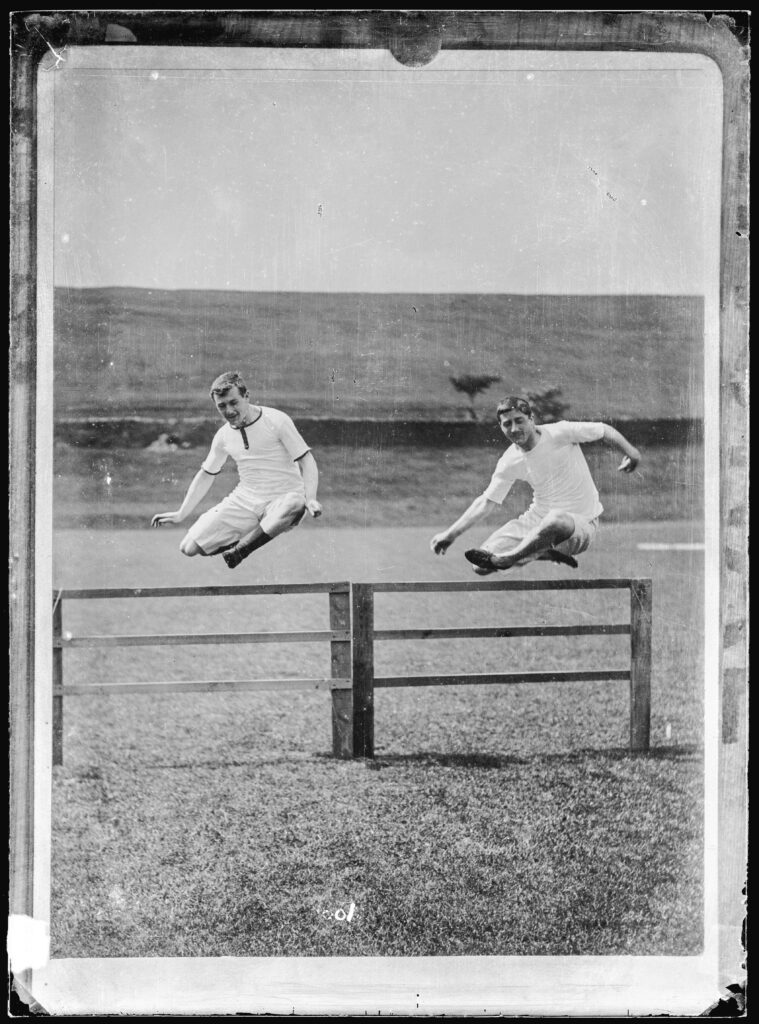Caitlin Greenwood, Heritage Development Officer at the Museum of North Craven Life on the transformative nature of their recent digitisation project.
The Horner Collection
The Horner Photographic studio was a commercial photography studio in Settle, North Yorkshire. Founded by Michael Horner in 1864, it passed to his brother Anthony, then just 16 years of age, following Michael’s death from tuberculosis in 1869. Helped by his mother, Anthony developed the studio into a thriving business. His son, Edward Holmes Horner, ran the studio until his own death in 1960. The Horners specialised in portraiture, especially the ever-popular carte de visite, and landscapes. They also produced stereographs, postcards, prints and other commercial photographs of local landmarks, businesses, events, and discoveries. They documented the dedication of lifeboats bound for Hornsea and Anglesey, the construction of an immense, domed chapel at Giggleswick School, and recorded the army volunteers leaving by train from
Settle Station in 1914.
On Eddie Horner’s death, the studio was sold twice in rapid succession as a viable photographic business. The eventual owners found on the premises many glass plate and film negatives of the Horner photos, preserved in their original boxes. They created a list of the surviving material, reproduced the most popular images for sale and published a small selection in a pamphlet to accompany an exhibition. Following their retirement, the collection was stored in their home.
In 2021, the Museum of North Craven Life in Settle purchased the collection. Determined to keep the collection in the local area, we obtained an award from the ACE/V&A Purchase Grant Fund and raised the remaining funds through a community crowdfunder. We were aware that the Horner Studio was locally important, but the crowdfunder was the first glimpse of how strongly our community felt about the collection: In less than a month, over 100 people had donated to save it, raising two and a half times the minimum we needed to match the purchase grant.
The project
We now knew how deeply people cared about the collection. We immediately applied for ACE Culture Recovery Funding to set up a pilot project to assess how we should rehouse, digitise and catalogue the collection.
With further support from an Art Fund Reimagine grant, we were able to work with an experienced photographic historian and technician, Dr Damian Hughes, who led a team of volunteers through the delicate, two-year process of listing, rehousing, scanning, and describing the collection. As the collection covers a span of almost 100 years, it has examples of many different photographic technologies, most notably wet plate collodion, gelatin glass plate and gelatin film, and modern colour film. As objects, each of these has different packaging needs, as well as different scanning requirements to best capture the image, and volunteers have become adept at recognising these.
A photographic negative is both a physical object and carries an image that must be processed before the positive photograph can be viewed. To capture this, we decided that each record should include two images, one a scan of the negative itself, and one a digitally inverted positive, showing what we would recognise as a photograph. Where an unusual photographic process was used, or the plate or film had been extensively re-touched and altered, we recorded a third image to capture the details of the process.
We created a new catalogue template in Modes Complete for recording each negative. This allows us to control key words and standardise certain fields while removing irrelevant fields, to ensure consistency of entry, which is undertaken by volunteers with oversight from the collections team.

SETCL : 2022.1.14.2a – Men Hurdlers, ca 1900-1925.
The online catalogue
From the outset, our aim was to produce an online catalogue of the Horner collection. After some research, we decided to pilot CatalogIt (and AIM Associate Supplier), populating the system with data exported from our Modes records to create a fully illustrated, searchable version of the catalogue accessible via our website.
We launched the first tranche of over 1500 images to the public in November 2024 and the response has been overwhelming. We’ve heard from people across our region who have identified buildings, caves, farms, and people. One of our accounts team recognised her own father in a photograph and was able to tell us about his involvement in the pictured fundraising event. Some members of the community have systematically examined every photograph in the collection and provided us with an extensive list of identifications and corrections, for which we are extremely grateful.
Crowdsourcing the information in this way has revealed in a month far more about the collection than the museum team could have discovered in years of research and has strengthened our bonds with the community.
Our next step is to work with the community to develop a co-curated interpretation plan for a permanent exhibition about the collection. In the meantime, we are testing new ways to enable more people to discover the collection, via a mailing list and our social media accounts where we post a Horner photo and story each week. A partnership with our local paper to print a photo every week as part of their nostalgia section, will ensure that local people who are entirely offline can also access the collection.
It’s no exaggeration to say that the Horner project has been transformative for the Museum of North Craven Life. We have acquired a collection of outstanding local importance, gained key skills in working with historic photography, and made new and profound links with our local audiences.
Click here to view the catalogue (opens in a new tab)